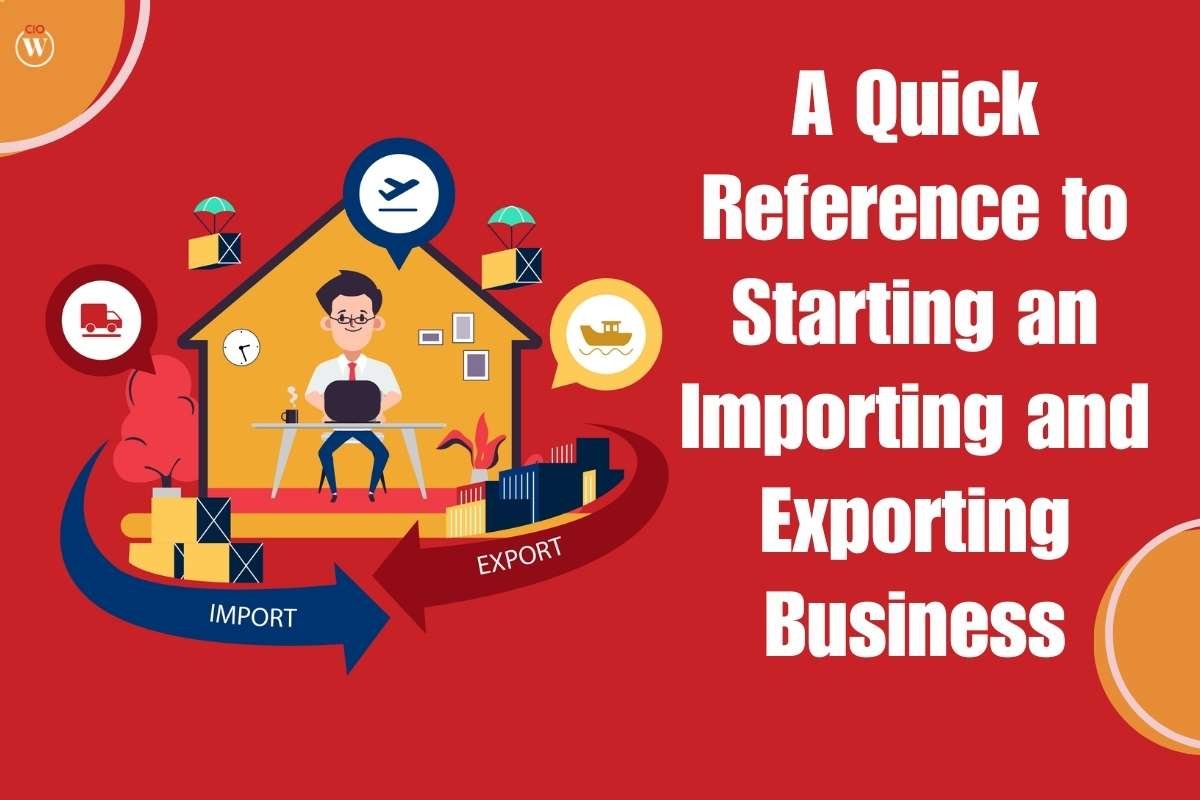Starting an importing and exporting business can be a lucrative opportunity for entrepreneurs. However, there are several critical steps that need to be taken before getting started. In this guide, we will provide a quick reference to starting an importing and exporting business, including the necessary steps to take, the legal and regulatory requirements, and some tips for success.
Here are some necessary steps to starting an importing and exporting business;
Step 1: Conduct Market Research
Before starting an importing and exporting business, it is essential to conduct thorough market research. This research will help you understand the demand for the products you want to import or export, the competition, and the regulations and restrictions associated with your chosen products. Here are some key factors to consider when conducting market research:
- Identify Your Products: The first step is to determine the products you want to import or export. Look for products that have high demand and low supply in your target market. Consider the regulations and restrictions associated with your chosen products in your home country and the target market.
- Assess the Market Demand: Conduct market research to determine the demand for your chosen products in your target market. Look for trends, demographics, and competition to identify the demand.
- Research Competitors: Identify your competitors and assess their strategies, prices, and market share. Determine what makes your product unique and how you can differentiate yourself from competitors.
- Understand the Regulations: Research the regulations and restrictions related to importing and exporting your chosen products. Determine the legal requirements, documentation, and certifications necessary for importing and exporting products.
Step 2: Develop a Business Plan
Once you have conducted market research, it is essential to develop a business plan. A business plan is a roadmap for your business that outlines your goals, strategies, and financial projections. Here are some key elements to include in your starting an importing and exporting business plan:

- Executive Summary: Provide a brief summary of your business, including your products, target market, and goals.
- Market Analysis: Detail your market research, including the demand for your product, competition, and regulations.
- Products and Services: Describe your products and services, including the benefits and unique features.
- Marketing and Sales Strategies: Detail your marketing and sales strategies, including pricing, distribution channels, and promotion.
- Financial Projections: Provide financial projections for your business, including revenue, expenses, and profit margins.
Step 3: Register Your Business and Obtain Licenses
Before starting an importing and exporting business, it is necessary to register your business and obtain the necessary licenses and permits. Here are some key steps to follow:
- Choose a Business Structure: Decide on the structure of your business, such as a sole proprietorship, partnership, or corporation.
- Register Your Business: Register your business with the appropriate authorities, such as the state or local government.
- Obtain Business Licenses and Permits: Obtain any necessary licenses and permits for importing and exporting products. These may include import/export licenses, customs permits, and certifications for specific products.
Step 4: Secure Funding
Starting an importing and exporting business can be expensive, and it is essential to secure funding before getting started. Here are some key ways to secure funding:

- Self-Funding: Use personal savings or assets to finance your business.
- Loans: Apply for loans from banks, credit unions, or other financial institutions.
- Investors: Seek investment from private investors, venture capitalists, or angel investors.
Step 5: Establish Relationships with Suppliers and Buyers
Once you have secured funding and obtained the necessary licenses for starting an importing and exporting business, it is time to establish relationships with suppliers and buyers. Here are some key strategies to follow:
Identify Suppliers: Use your market research to identify potential suppliers in your target market. Attend trade shows and connect with suppliers online to establish relationships.
- Negotiate Contracts: Negotiate contracts with suppliers that outline the terms of your agreement, including pricing, delivery times, and quality standards.
- Identify Buyers: Use your market research to identify potential buyers in your target market. Attend trade shows and connect with buyers online to establish relationships.
- Negotiate Contracts: Negotiate contracts with buyers that outline the terms of your agreement, including pricing, payment terms, and delivery times.
Step 6: Develop a Logistics Plan
Developing a logistics plan is essential for managing the transportation and storage of your products. Here are some key elements to include in your logistics plan:
- Transportation: Determine the best transportation methods for your products, such as air, sea, or land. Consider factors such as cost, time, and the nature of your products.
- Storage: Identify storage facilities, such as warehouses or distribution centers, for your products. Consider factors such as location, cost, and security.
- Inventory Management: Develop a system for managing your inventory, including tracking shipments and managing stock levels.
Step 7: Comply with Legal and Regulatory Requirements
Complying with legal and regulatory requirements is essential for avoiding legal issues and ensuring the smooth operation of your business. Here are some key legal and regulatory requirements to consider:

- Customs and Border Protection: Follow the regulations and requirements established by the Customs and Border Protection agency for importing and exporting products.
- Trade Agreements: Understand the regulations and requirements associated with trade agreements between your home country and the target market.
- Product Standards: Comply with the product standards established by the target market, including certifications and labeling requirements.
Step 8: Monitor Performance and Make Adjustments
Once your importing and exporting business is up and running, it is essential to monitor your performance and make adjustments as necessary. Here are some key strategies for monitoring and adjusting your business:
- Track Financial Performance: Monitor your financial performance regularly, including revenue, expenses, and profit margins.
- Assess Market Trends: Continuously assess market trends and adjust your products, marketing, and sales strategies as necessary.
- Evaluate Supplier and Buyer Relationships: Regularly evaluate your relationships with suppliers and buyers and make adjustments as necessary.
BOTTOM LINE
Starting an importing and exporting business requires careful planning and execution. Conducting market research, developing a business plan, registering your business and obtaining the necessary licenses, securing funding, establishing relationships with suppliers and buyers, developing a logistics plan, complying with legal and regulatory requirements, monitoring performance, and making adjustments are critical steps to take. By following these steps, you can increase the likelihood of success and build a profitable importing and exporting business.
Also read: Japans Export Growth Weakest in Over Two Years, Weighing on Economic Recovery









